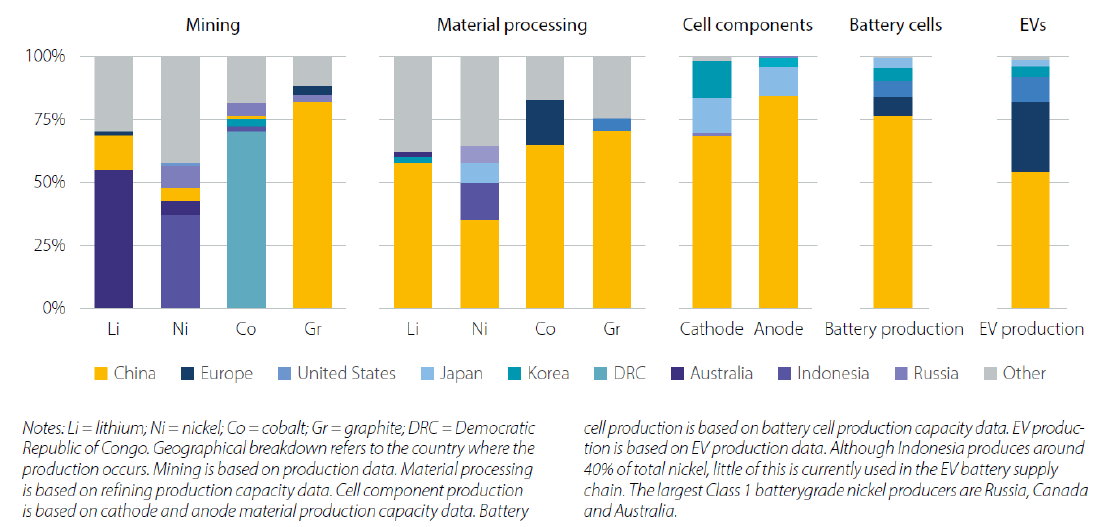Key Takeaways
- Asia’s demographic dividend will ensure the region accounts for half of global consumption within the next decade.
- A decade of investment into Asia’s healthcare needs has promoted innovation in biosciences and the expansion of digital health technologies within rural and previously underserved areas.
- Asia is leading the pack in providing for global decarbonisation and securing substantial rewards – it already dominates in battery cell and related component manufacturing, in the solar value chain and is pushing ahead in the development of climate-related innovations.
Right now, three megatrends are widely prevalent across Asia which look like significant drivers of investment growth for many years to come. These megatrends are consumption, healthcare and the net zero transition.
The rise of the Asian consumer
Asia’s immense population makes it the most significant consumer market in the world. Moreover, the rapid economic growth of many Asian countries in recent years has helped to significantly increase its population’s disposable income from a much lower base. According to Euromonitor’s 2022 Income and Expenditure in Asia Pacific report, total disposable income in the Asia-Pacific region is set to more than double in real terms over the 2021-2040 period, faster than in any other region, although it will still be among the lowest globally.1 Consumers in Asia are expected to account for half of global consumption growth within the next decade. Many countries in Asia are already benefitting hugely from their ‘demographic dividend’ – the boost to consumption and economic productivity driven by a young and growing population.
Reflecting this demographic dividend, Asian consumption has experienced a paradigm shift evidenced by the rise of domestic brands, the increasing prominence of lower-tier cities, and a growing awareness of environmental and social issues among consumers. The pandemic has been instrumental in deepening and accelerating these changes. No wonder then, McKinsey calls Asia “a $10 trillion consumption growth opportunity”.2
Asia’s healthcare story
Across Asia, healthcare innovation and investment are borne from a critical need. Asia is home to more than 4.5 billion people, and its growing and ageing population demands access to better healthcare services, as well as innovative, affordable and accessible medicines. The imperative for healthcare investment in Asia has only accelerated post-pandemic. But Asia’s healthcare industry today is where its technology industry was in the 2000s, and more than a decade of investment is now bearing fruit.
Across the Asia-Pacific region, governments have encouraged private sector investment and public-private partnerships, introduced new regulations and standards to encourage innovation in biomedical sciences and ensure a high standard of care, and promoted digital health technologies to serve rural and previously underserved areas.
Moreover, extensive and relentless research and development (R&D) efforts – coupled with major advances in medical technology – have enabled the development of new treatment modalities, greatly improving clinical outcomes. In addition, Asia’s key role in the global manufacturing supply chain of medicines, as well as the rise in demand for outsourced research, development and manufacturing services, uniquely positions the region to capitalise on the growth opportunities in healthcare.
Drug manufacturing and ingredients
Until the 1990s, the West and Japan produced 90% of the active chemicals used in drug manufacturing, also known as ‘active pharmaceutical ingredients’ (APIs). Such ingredients are sourced from chemical suppliers and formulated into a final dosage form – such as a tablet, capsule, or injection. However, Asia’s decade-long investment in the pharmaceutical industry, and its increasing ability to manufacture consistent, high-quality APIs, meant that by 2020, the region was producing more than 60% of the world’s APIs. China alone accounted for the bulk of exports of several key pharmaceutical raw materials, and – according to Nikkei Asia – was by then already playing “an indispensable role in the supply chain for antibiotics and vitamins”.3
Figure 1 – China’s share of global exports of key pharmaceutical ingredients in 2020, by volume

Source: Nikkei Asia, Trade Map, data may contain chemical compounds for other uses
But more significant developments are taking place throughout Asia, driven by the universal need for better medicines. A big turning point for the healthcare industry as a whole – providing confirmation that healthcare in Asia is an investment megatrend – is that Asian companies are now developing potentially first-to-market, globally competitive and innovative drugs.
The transition to net zero
Net zero is a global challenge that requires a united response. All countries and regions need to decarbonise, but there are substantial rewards on the table for those most capable of driving the push for global decarbonisation. So, who is building the materials and equipment needed to realise the world’s net zero ambitions? The answer, both now and well into the future, is Asia.
Take transportation as an example. All forms of transportation – including road, air, rail, sea and others – contributes approximately 21% of annual global CO₂ emissions.4 The transition towards a clean transport infrastructure and greener vehicles – replacing internal combustion engine vehicles with electric vehicles and those powered by hydrogen fuel cells – would make a significant contribution towards achieving net zero.
Asia leads the world in battery cell and related component manufacturing. Battery storage and grid-level electricity storage rely on metals such as lithium, cobalt or nickel. Again, the supply chain for all of these depends heavily on either Asia or the emerging markets. Electric vehicle (EV) sales have caused demand to grow exponentially and it’s looking increasingly unlikely that Asia’s leading manufacturers will be dislodged as economies of scale become more entrenched. The lithium-ion battery market is expected to grow from USD 57 billion in 2020 to USD 200 billion by 20275, and the key components are currently supplied from China, South Korea and Japan.
Figure 2 – Geographical distribution of the global EV battery supply chain

Source: IEA analysis based on: EV Volumes; US Geological Survey (2022); Benchmark Mineral Intelligence; Bloomberg NEF.
China, in particular, is charging ahead in its efforts to develop its renewable energy capacity. While remaining the world’s biggest user of coal, a recent study by Global Energy Monitor (GEM) forecast that China will more than double its large-scale solar and wind capacity over the next few years. This would see the nation meet its 2020 commitment to install over 1,200 gigawatts of solar and wind power five years ahead of schedule.6
In addition, Asia continues to move forward in terms of research and development on climate-related issues. According to McKinsey, Japan, South Korea, China and India are in the top quartile for the number of patent filings relating to climate-change mitigation, while South Korea, Japan, China and Singapore are all in the top quartile of countries for spending on R&D as a percentage of GDP.7
These three investment megatrends – consumption healthcare, and net zero initiatives – demonstrate the direction of travel for Asia. What’s more, due to their domestic focus these trends are more geopolitically insulated than other more export-orientated sectors in Asia.
If you believe these megatrends offer significant growth potential, it makes sense to consider the opportunity to embrace the future direction of travel. For more information on Asia’s investment megatrends, please download Nikko AM’s investment guide: Harnessing change in Asia.
1 https://www.euromonitor.com/income-and-expenditure-in-asia-pacific/report
3https://asia.nikkei.com/static/vdata/infographics/chinavaccine-3/
4https://ourworldindata.org/co2-emissions-from-transport
5Lithium-Ion Battery Market - Growth, Trends, COVID-19 Impact, and Forecasts (2023-2028)
6Climate change: China's green power surge offers hope on warming - BBC News
If you have any questions on this report, please contact:
Nikko AM team in Europe
Email: This email address is being protected from spambots. You need JavaScript enabled to view it.





